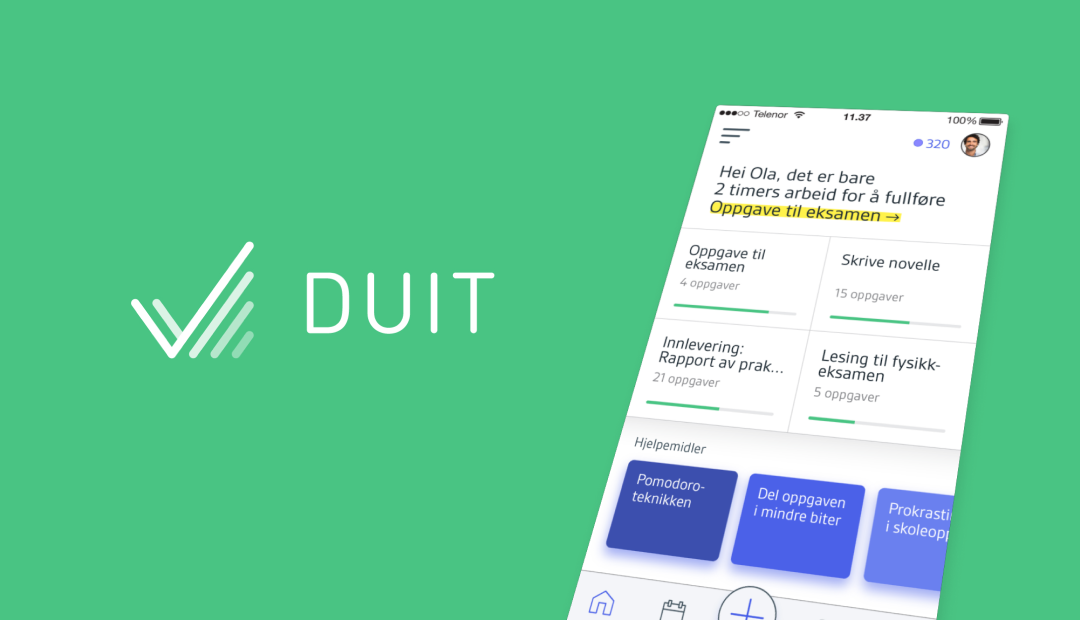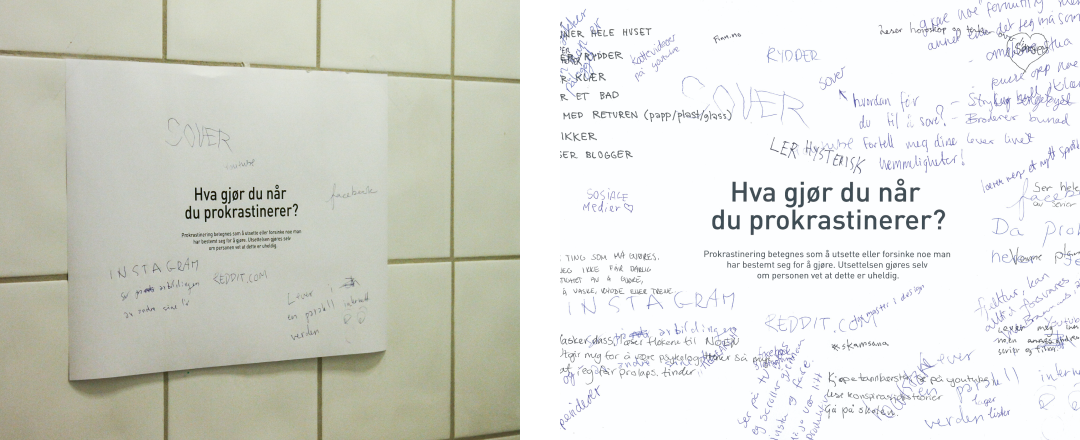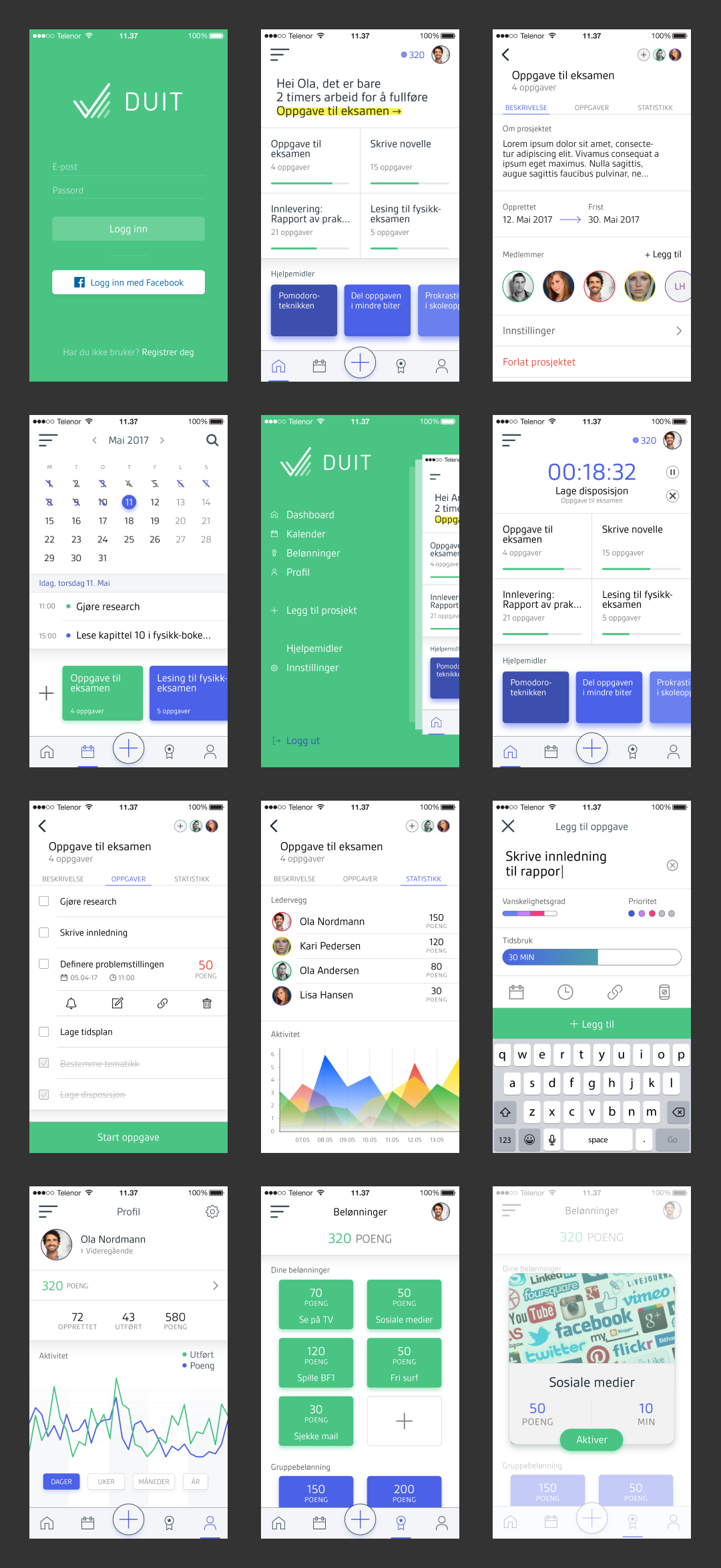Todo app against procrastination
Students at universities and colleges face various challenges and issues in their academic lives. Programs with longer time intervals for exams and project submissions appear to pose challenges for some students in prioritizing academic tasks and, consequently, following the prescribed study progression.
My thesis focused on procrastination in an academic setting:
"How to identify the problem in terms of text and visual representation, suggestions for digital and analog tools aimed at interventions and methods that can create positive changes in negative procrastination behavior among students."
The solution was a todo app for students; a digital tool aimed at creating positive change in negative procrastination behavior among students.

Early in the project I ran a survey on posters around campus, where students could give their anonymous responses. It gave an indication to where or when the students thought they were procrastinating. The responses were rather biased, or in some cases, based on a wrong understanding of what procrastination is. I did interviews with psychologists specialising in procrastination to see the correlation between the data I had collected.

In my own process I tried out multiple methods, such as splitting the task into smaller parts, and the Seinfeld-method where the goal is to do something everyday not focusing on the end result, and the Nothing-method for limiting yourself to one or two actions, such as not leaving the chair before reaching a set goal.
Another method I tried out was a task/reward-method. I created a form that I filled in daily with tasks I needed to complete, and some rewards such as scrolling social media for 10 minutes. These methods became the basis of the app.

The goal was to create an app where students could go to work on projects, collaboratively or individually. It was meant to be used as a basic todo-application with tools related to studying, but also include functionality that allows student to collaborate with eachother. The user could set tasks needed to be completed, and add points will be given when the task was completed. The points could be used for certain rewards.

